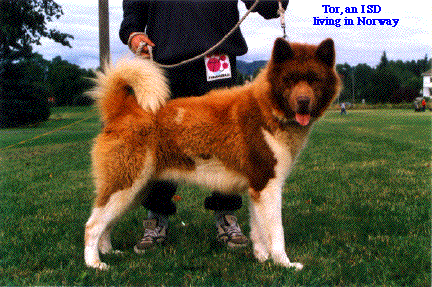Table of Contents
From the Editor
*
Major Announcement
*
IGE Expedition News
*
A Chat About Breeding
*
Honour & Glory
*
Behavioral Notebook
*
Janice Howls
*
IMHO: Pets, et al
*
Major Announcement
*
IGE Expedition News
*
A Chat About Breeding
*
Honour & Glory
*
Behavioral Notebook
*
Janice Howls
*
IMHO: Pets, et al
Navigating This
Site
Index of articles by subject
Index
of back issues by volume number
Search The
Fan Hitch
Articles
to download and print
Ordering
Ken MacRury's Thesis
Our
comprehensive list of resources
Talk
to The Fan
Hitch
The Fan Hitch
home page
ISDI
home page
Editor's/Publisher's Statement
Editor: Sue Hamilton
Webmaster: Mark Hamilton
The Fan Hitch Website
and Publications of the Inuit Sled
Dog– the quarterly Journal (retired in 2018)
and PostScript – are
dedicated to the aboriginal landrace
traditional Inuit Sled Dog as well as related
Inuit culture and traditions.
PostScript is
published intermittently as material
becomes available. Online access is free at: https://thefanhitch.org
PostScript welcomes your
letters, stories, comments and The editorial
staff reserves the right to edit submissions
used for publication.
Contents of The Fan Hitch Website and its publications are protected by international copyright laws. No photo, drawing or text may be reproduced in any form without written consent. Webmasters please note: written consent is necessary before linking this site to yours! Please forward requests to Sue Hamilton, 55 Town Line Rd., Harwinton, Connecticut 06791, USA or mail@thefanhitch.org

IGE finds Dog Sledge Route Impassable
The two Arctic adventurers, an American and an Australian, now considered their options. They could radio for an airlift back to safety. That would entail considerable expense and contradict the basic philosophy of the expedition. It would also put at risk the aircraft crew that came for them. The alternative was to retrace the grueling 325 miles to Siorapaluk by dog sledge, traveling as quickly as they could with the increasing Arctic daylight and a dwindling food supply. Neither team member was anxious to repeat events of the outbound journey - fighting through the pack ice ofKane Basin at -57°F, recrossing the massive crevasse fields of the ice cap tot he south, or being tent bound for 5 days by 100 mph winds. After assessing the supply situation, they made their decision. If they could make better time on the return, and if they encountered no major delays, their food should last until they reached Siorapaluk. If and should - two words they had been using entirely too much in recent days. This time, their luck held.
Only slightly disheartened by the impossibility of transiting the northern Greenland coast by dog sledge in the dead of Arctic winter, the team regrouped and modified their plan to maximize the unique opportunity that nature had placed before them. With time now at their disposal before continuing with the planned second kayaking leg of the expedition, they traveled by dog sledge to the remote villages that exist at these extreme northern latitudes. In total, they logged over 2000 miles by dog team. Their extensive travels were documented through still photography and information on the customs and way of life that have allowed this traditional, subsistence lifestyle to succeed for over a thousand years. The time spent provided a wealth of information to be shared with those following the expedition through its Interned web sites and with schools participating in the IGE educational programs.
In early May, Lonnie and John said farewell to their Greenlandic huskies, leaving them with friends in the environment to which they are best suited. The team then traveled by air to Tasilaq on the eastern coast of Greenland to continue their explorations into Inuit culture and to prepare for the final leg of their journey - 750 miles by sea kayak to the expedition's 1997 starting point, the tiny village of Paamiut in southwestern Greenland.
This report was taken from the volume 3 issue 2 of Piteraq, the Newsletter of the International Greenland Expedition, with the generous permission of the IGE.